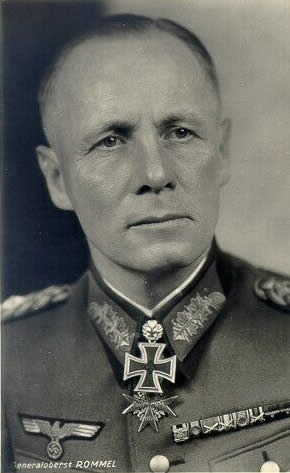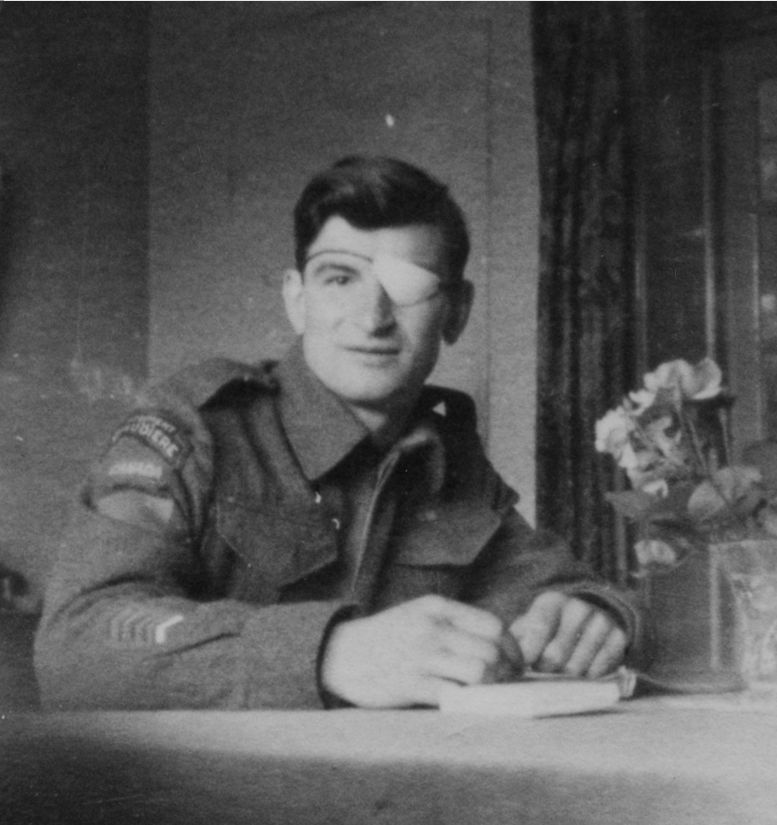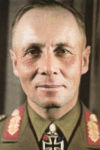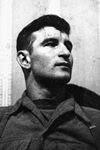Movie-Cameramen in the Front Line of Battle
The War Illustrated, Volume 7, No. 164, Page 278, October 1, 1943.
Those who saw Desert Victory, the film of the 8th Army's triumph in Italian North Africa, cannot but have been impressed by the plentiful evidences of the movie-men's daring. This article by CHARLES GRETTON and JIM LE BRUN tells of some individual cameramen who "took" this and other war documentary films.
"Fire!" yells the officer. "Fire!" yells another mouth in gigantic close-up; and the silence is shattered by such a tempest of fire and fury as seems incredible even now. Guns tear the night to red ribbons; not one a second, but scores simultaneously. The effect on the enemy is dazing. The miracle is that anyone lived through it. In the making of these dramatic war films on the battlefront, cameramen certainly risk their lives to put the war on the screen.
No. 1 unit of the A.F.P.U. comprising twenty-six photographers, including movie and still men under Major David Macdonald, the film director, carrying special portable 35-mm. cameras, raced forward with the front line to film Desert Victory. They shared the soldiers' hardships and brought back pictures of all arms in action which are magnificent in their realism and revelation of stark courage. This triumph of art and valour was not bloodless. Seven A.F.P.U. cameramen were killed or missing (including one still cameraman); four are prisoners of war.
Major David Macdonald, of the Army Film Unit, responsible for some of this war's best movie-making, went out to Cairo in November 1941, when Rommel thought he was going to throw us out of Egypt.
"I took with me thirty-two cameramen", Macdonald said. "They were allotted to the various divisions and ordered to go into action with the troops and film what they could. The terrific barrage, the tank battles and bayonet charges you see in the film were taken from every possible angle – in front of the men, behind them, at the side of them. Of course, we couldn't help having casualties. They occurred after Benghazi, mostly from mines, dive-bombers and anti-personnel artillery fire. Four of us were taken prisoner."
"One of my cameramen was formerly a salesman at a Bond Street photographer's; another was a projectionist at a West End cinema; a third – Sergeant Garnham, who used to work with the L.M.S. - was my Number One camera mechanic. He used the Western Desert as his back room. When the cameras came back from the show, clogged with sand, he always had another one ready. But for that sergeant there would have been no picture of the Eighth Army."
"The Army perhaps do not regard us as combatant troops. But we were often ahead of the fighting. We were first in Tobruk. On one occasion a senior officer, questioned whether a certain town had fallen, said: 'Yes, the Army Film Unit photographed it this morning!'"
"I hope this doesn't sound too like a puff for ourselves, but the forward positions of the camera crew accounted for three of four sergeants being killed by mines."
"After the fall of Benghazi I came back to assemble the miles of film we had taken; but most of the credit goes to the editor, Captain Roy Boulting – he made Thunder Rock – whose all-round brilliance will make him one of the biggest film men one day. Sergeant Dickie Best, his first assistant, also did great work."
"And there was a woman who helped – Mrs. White – the only woman on our staff. It was she who, time after time, found us the one shot we needed out of thousands and thousands."
Killed in Air Operations
Unluckily not all of our war movie heroes live to see their films screened. For instance, some of the war's most vivid news films of R.A.F. exploits were shot by Flight-Lieut. Donald N. Gallai-Hatchard, of the R.A.F. Film Unit, who later was killed in air operations in Tunisia. His area shot of the Dieppe raid, the R.A.F. big daylight raid on Lille, and others on north-west Germany, thrilled countless cinema goers. Some of the most recent news films of the aerial war in Tunisia were also his work.
Formerly an operative cameramen for the London Film Production Company, he helped to film Private Lives of Henry the Eighth, Shape of Things to Come, and The Citadel – the last picture on which he was engaged before joining the R.A.F. as an ordinary aircraftman. He was 32 when he was killed.
Still alive and defying the Nazis to harm him is another tough war cameraman, Jack Ramsden. The Eighth American Air Force and the Eighth British Army fill with their exploits the latest news reels, Jack Ramsden, British Movietone News cameraman, went with Flying Fortresses bombing railway yards at Rouen. His film and pictures of other raids by Forts make fitting companions to scenes from the Mareth Line.
Then there is Flight-Lieutenant John Boulting, who is going to America to make a film about the air training scheme there. He is 29. Before he was posted to the R.A.F. Film Unit, he served as an A.C.2 mechanic. His twin brother, Captain Roy Boulting (praised by Major Macdonald), served in a tank regiment for more than a year before joining the Army Film Unit. He has made several short documentaries. One, Via Persia, showed the southern supply route to Russia. Another, The Army Lays the Rails, told the story of the Royal Engineers. Roy also filmed the Vaagso raid landing.
Some of the latest war films are not just documentaries for entertainment. They are for Service instruction. A technicolour film of the actual fighting between American and Axis forces in North Africa is to be shown to United States and British troops in England for training purposes.
The film, now being made in the United States, is similar to Desert Victory and records the initial phase of the North African campaign, covering the occupation of Algiers, Casablanca and Oran and the first American action of the Tunisian front. Produced by Colonel Darryl Zanuck, U.S. Army Signal Corps and former executive of 20th Century-Fox, it was made largely in the height of battle. It shows Axis troops in retreat under terrific anti-tank fire, Lockheed Lighting fighters attacking Messerschmitts, and ships being loaded under extreme difficulties.
Of course, we are not the only ones who make this kind of film. Nazi Ufa film studios are busy with war subjects; the Japanese are making war films too. Thousands of British prisoners-of-war took part in making a film, The Siege of Singapore, according to Tokyo radio. Actual battle sites have been used.
Films, in the making of which men have given their lives, often have a happy ending. Here is a typical story – vouched for by the Army cameraman concerned.
The picture flashed on the screen for a moment – a line of troops embarking for a raid. As the camera moved along one soldier turned and smiled at it – smiled out into the packed cinema to his mother sitting watching him. It was the last smile she will have from him until the end of the war. He was taken prisoner. The film was a special wartime "short". The mother wrote to the Ministry pleading for the picture of her boy smiling as he left on his last raid.
There was little to identify him. The mother had not noticed that almost every one of that long line of British troops had smiled at the camera!
However, the war-film laboratory experts found the single frame in the film where her soldier-son appeared, and duly sent her a photograph form it.
Index
Previous article
I Was There! - I Saw Victory on the Land Army Battle Front
Touring the harvest fields, Patricia Ward of The Evening Standard (from which this story is reprinted) wrote in late August how farmers are rejoicing at the rich yield of Mother Earth: reward for our
Next article
I Was There! - I Saw the Fateful Battle of Salerno Beaches
From the third to the seventh day the issue of the nine days' battle for the beaches of Salerno, Italy, hung dangerously in the balance. How the Fifth Army finally won what Mr. Churchill called "an im







